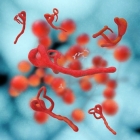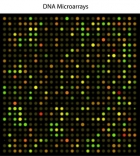Press monitoring
Research team uses CRISPR/Cas9 to alter photosynthesis for the first time
12.6.2024 | Press monitoring
A team from the Innovative Genomics Institute at the University of California, Berkeley (UCB) has produced an increase in gene expression in a food crop by changing its upstream regulatory DNA. While other studies have used CRISPR/Cas9 gene-editing to knock out or decrease the expression of genes, new research published in Science Advances is the...
Nanoparticles reprogram mouse immune systems to cope with allergens
10.6.2024 | Press monitoring
Two doses of allergen-encapsulating nanoparticles delivered intravenously prevented anaphylaxis during a food allergy test in mice, according to a study led by University of Michigan researchers. The results, published in Advanced Healthcare Materials, offer a potential path to improving the ease of allergy immunotherapies in humans which...
Chimeric nanomicelles show promise as alternative treatment for solid tumors
7.6.2024 | Press monitoring
Cross-border scientific collaboration has developed an alternative for the treatment of solid tumors based on inhibition of the inflammatory tumor microenvironment (TME). Solid tumors are difficult to treat, partly owing to cells and substances in the TME that prevent drugs from penetrating and stop the patient's own immune system from combating...
New modified CRISPR protein can fit inside virus used for gene therapy
5.6.2024 | Press monitoring
Researchers have developed a novel version of a key CRISPR gene-editing protein that shows efficient editing activity and is small enough to be packaged within a non-pathogenic virus that can deliver it to target cells. Hongjian Wang and colleagues at Wuhan University, China, present these findings in the open-access journal PLOS Biology. Recent...
Study reveals promising technology for sepsis treatment using functional magnetic nanoclusters
3.6.2024 | Press monitoring
A research team has introduced a novel technology capable of removing inflammation-triggering agents in extracorporeal blood. The team, led by Professors Joo Hun Kang and Jinmyoung Joo in the Department of Biomedical Engineering at UNIST, in collaboration with Professor Jae Hyuk Lee from Seoul National University Bundang Hospital, anticipates...
Breakthrough synapse-regenerating ALS pill moves to phase 2 human trials
31.5.2024 | Press monitoring
A pioneering once-a-day pill that regenerates nerve cell connections damaged by ALS has been FDA-approved for ongoing clinical trials. The drug is now being given to those with ALS and could be a watershed moment in the treatment of the fatal disease. Spinogenix, a clinical-stage biopharmaceutical company, has developed SPG302, a unique...
New antibiotic kills pathogenic bacteria, spares healthy gut microbes
29.5.2024 | Press monitoring
Researchers have developed a new antibiotic that reduced or eliminated drug-resistant bacterial infections in mouse models of acute pneumonia and sepsis while sparing healthy microbes in the mouse gut. The drug, called lolamicin, also warded off secondary infections with Clostridioides difficile, a common and dangerous hospital-associated...
Team develops an intelligent nanodevice based on a component of cinnamon essential oil as an antimicrobial agent
27.5.2024 | Press monitoring
A team of researchers from the Universitat Politecnica de Valencia (UPV) and the CIBER de Bioingeniería, Biomaterials y Nanomedicine (CIBER-BBN) has developed an intelligent "nanokiller" based on a component of cinnamon essential oil (cinnamaldehyde) for use as an antimicrobial agent. So far, the new nanodevice has shown significant efficacy...
Chocolate that harnesses the full potential of the cocoa fruit
24.5.2024 | Press monitoring
Researchers at ETH Zurich have teamed up with the food industry to produce a whole-fruit variety of chocolate. This helps increase the value creation of cocoa farming – and is healthier. For many people, chocolate is a sweet delight: its main components are cocoa mass and cocoa butter, which are extracted from the cocoa fruit. What is less known,...
Nanotubes, nanoparticles and antibodies detect tiny amounts of fentanyl
22.5.2024 | Press monitoring
A research team at the University of Pittsburgh led by Alexander Star, a chemistry professor in the Kenneth P. Dietrich School of Arts and Sciences, has developed a fentanyl sensor that is six orders of magnitude more sensitive than any electrochemical sensor for the drug reported in the past five years. The portable sensor can also tell the...
































